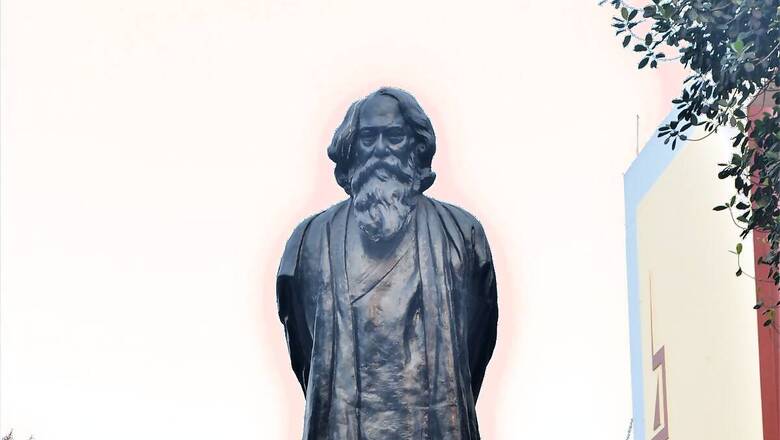
views
Born on May 7, 1861, the incredibly gifted bard of Bengal or Rabindranath Tagore’s birth anniversary is widely celebrated as Rabindra Jayanti. The literary icon’s humongous contribution to art, literature, music is unparalleled, still lives through his poems, songs, novels, short stories, novellas, plays, paintings, travelogues. The first Asian to win the Nobel Prize for Literature, Tagore was a revolutionary, awe-inspiring legend who was instrumental in bringing about the Bengal renaissance.
Today as we celebrate the legend’s 160th birth anniversary, let’s look at some facts about India’s First Nobel Laureate:
1. Tagore wrote his first play, Valmiki Pratibha (The Genius of Valmiki) when he was 20 years old. Interestingly the play was first performed in his birthplace, Jorasanko Thakurbari, wherein the ‘bard’ himself essayed the role of ‘Valmiki’.
2. Rabindranath Tagore translated Gitanjali into English; and it was the renowned poet W.B. Yeats who wrote the preface to his English translation ‘Song Offerings’.
3. When Einstein had invited Tagore to his house in Caputh in 1930, the duo had an intriguing discussion on religion and science.
4. On the Nature of Reality is a fascinating documentation of that conversation of the 2 greatest minds.
5. Tagore had loved his stay in Hungary when he was recovering from his heart ailment. He had dedicated these lines to Hungary’s scenic beauty:
“I have seen almost all the countries of the world, but I saw nowhere such a beautiful harmony of the sky and the water than that I had the privilege to enjoy on the shore of Balaton, filling my soul with rapture.”
6. After his stay at the Heart Sanatorium, Tagore planted a linden tree in Balatonfüred, as a mark of his recovery.
7. In May 31, 1919, Tagore renounced his knighthood title which he received in 1915. He did this as a protest the Jallianwala Bagh massacre.
8. Did you know that Sri Lanka’s national anthem is based on Tagore’s poem? Yes, Sri Lanka Matha was inspired by Tagore after the original poem was translated into Sinhalese.
9. Ananda Samarakoon, who carried out this composition, was a student at Visva Bharati University founded by Tagore. Indira Gandhi, Satyajit Ray, Amartya Sen were the distinguished alumni of the university.
10. Tagore used his Nobel Prize money in building the Visva-Bharati in Shantiniketan.
11. Tagore’s Nobel Prize medal got stolen from the museum in Shantiniketan in 2004. However, the Swedish Academy once again honoured the world poet with two replicas, a gold and a silver.
Read all the Latest News, Breaking News and Coronavirus News here. Follow us on Facebook, Twitter and Telegram.


















Comments
0 comment